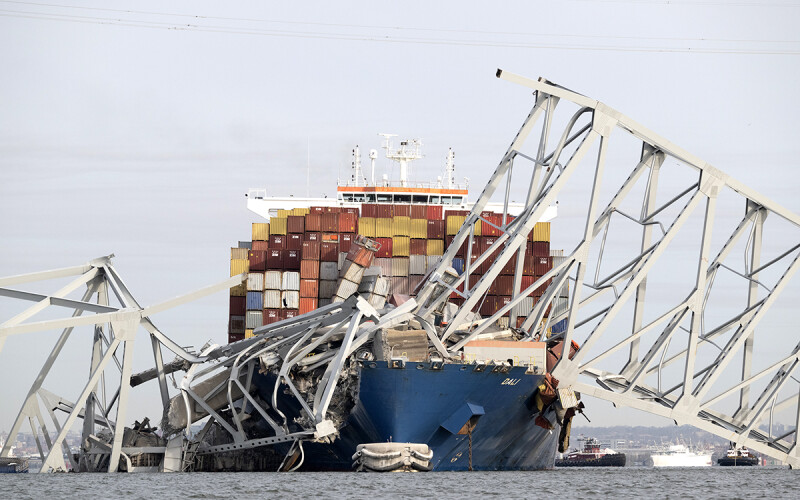With all the talk about the container ship that knocked out the Francis Scott Key Bridge in Baltimore last week, there was initially little attention to prevention. What can you do with a ship that big, people seemed to say with their palms in the air.
Well, what you can do is push it and/or pull it out of harm’s way with high-horsepower tugs. The general public may not realize it, but the maritime industry knows that many tugs have been designed and built to specifically stop or turn ships. This type of escort is typically deployed with laden oil tankers. Container ships? Not so much.
But the Dali had been under the control of two McAllister tugs only minutes before plowing into the Key Bridge and unleashing massive mayhem and the loss of six human lives.
Had at least one of those two tugs, say the 5,000-hp Eric McAllister, been running alongside the ship, it could have immediately at least attempted to counter the unintended drift toward the bridge pier. Would that have been enough? I certainly can’t say; maybe a naval architect could, but I have to think probably. I’ve watched escort tugs work crude oil tankers in Valdez, Alaska, so I know it’s possible.
The McAllister tugs reportedly left the Dali 18 minutes before the ship’s power went out. How much would it have cost to keep a tug with the ship another 20 minutes or so, enough to get by a very vulnerable bridge? Thousands of dollars? Maybe another ten? Whatever the real number, the comparison to the costs now piling up with the bridge down in the water is ridiculous. Replacing the bridge will cost well over a billion, and there may be up to three billion in liability claims, not to mention the disruption to adjacent businesses and the supply chain that doesn't qualify for insurance claims. Throw in another billion for that and other costs. That’s five billion so far.
With a bridge that vulnerable, I would have thought officials might have been more worried about ship strikes. The Washington Post reported that there had been a lot of concern that the bridge might be a terrorist target, so countermeasures were taken for that. The structural integrity of the bridge was also an issue, so inspections were ramped up. But suddenly, powerless container ships? Hmm...
Mostly, tug escorts aren’t seen as necessary or cost-effective. And mostly, they aren’t. Jennifer Carpenter, president of American Waterways Operators, told the Associated Press that having a pair of escort tugs for every ship “would have massive implications for the efficiency and safety of our waterways, which are already pretty crowded.” That would also add unwanted pollution.
But sometimes, you go the extra mile in the name of safety. Out here in Washington, we have an emergency response tug stationed at Neah Bay, at the entrance to the Strait of Juan de Fuca. The Emergency Response Towing Vessel has been on duty since 1999. It’s industry-funded and managed by Seattle’s Marine Exchange. The various tugs, usually from Foss Maritime, have been called out many times, often to standby or tow when a ship loses power, which is surprisingly often. The shipping industry has never liked it and doesn’t think it’s necessary, but we haven’t had any serious oil spills out there since the ERTV went into service about 25 years ago.
Having the capability to present disasters is simply having insurance. Yes, it costs money. Yes, there are other conflicting interests. But the risk analysis for the Key Bridge should have included the scenario that played out for real last week. This doesn't mean that every port should routinely require escorts for every ship, but some situations clearly call for better emergency response. In Baltimore, it wouldn't have taken that much.




